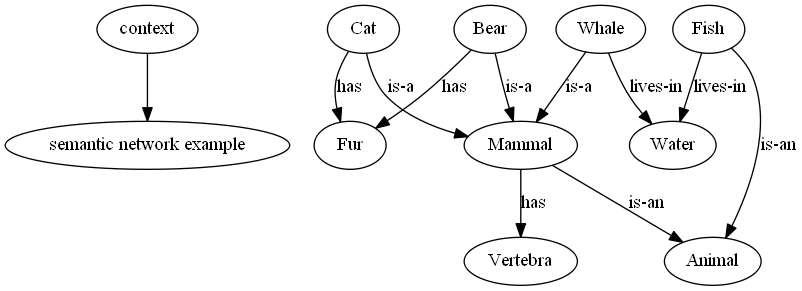Let's start with this LISP:
(defun *database* ()
'((canary (is-a bird)
(color yellow)
(size small))
(penguin (is-a bird)
(movement swim))
(bird (is-a vertebrate)
(has-part wings)
(reproduction egg-laying))))
Now in BKO:
---------------------------------------- |context> => |context: semantic network> is-a |canary> => |bird> color |canary> => |yellow> size |canary> => |small> is-a |penguin> => |bird> movement |penguin> => |swim> is-a |bird> => |vertebrate> has-part |bird> => |wings> reproduction |bird> => |egg-laying> ----------------------------------------Anyway, I obviously prefer my notation. For one it is uniform, ie all in form OP KET => KET. And unlike LISP, the grep of any valid sw file, is itself a valid sw file. A small thing, but sometimes useful. eg, if you have a big file and you only need a subset of the operators, using grep you can shrink it to a more manageable file size. The other thing is that in BKO we can effectively have a list on the right hand side (ie a superposition), and further, associate floats with each element in that list. Presumably this is harder in LISP.
Next, the wikipage has this image:
So, let's cast this to BKO:
---------------------------------------- |context> => |context: semantic network example> has |Mammal> => |Vertebra> is-an |Mammal> => |Animal> is-a |Cat> => |Mammal> has |Cat> => |Fur> is-a |Bear> => |Mammal> has |Bear> => |Fur> is-a |Whale> => |Mammal> lives-in |Whale> => |Water> is-an |Fish> => |Animal> lives-in |Fish> => |Water> ----------------------------------------And then graphviz this sw we get:


No comments:
Post a Comment